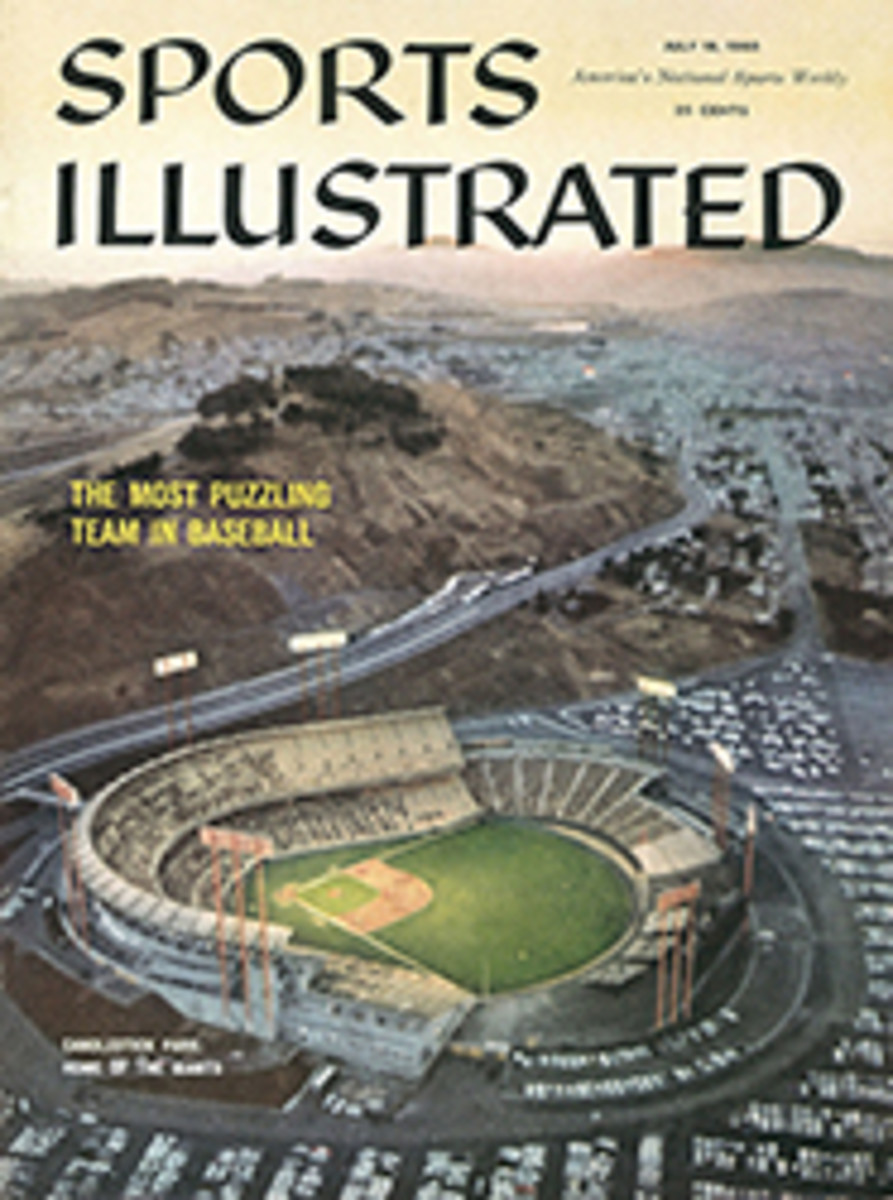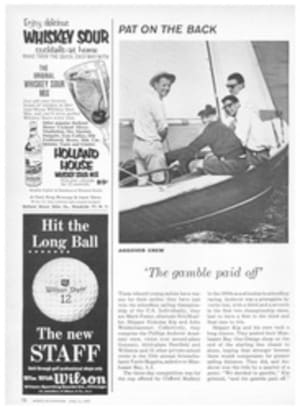
The old Navy way
Broad shafts of wind made finger-like ripples on Onondaga Lake outside Syracuse, N.Y. last Saturday during the Olympic rowing trials. At the halfway mark of the 2,000-meter course there was an inviting flat spot. U.S. Naval Academy Coxswain Bill Long headed for it, and when it was reached he rapped the side of the eight-oared shell and called for "10 quick ones." From there the Navy varsity forged ahead like an atomic-powered destroyer. To the U.S. Olympic Committee, the result was clearly disconcerting. It had expected that one of the more polished crews in the trials would represent us at Rome.
"I hope," Olympic Committee Chairman Clifford (Tip) Goes solemnly announced two hours after Navy's victory, "that we will have a championship eight by August. How good is Navy? I really can't compare it with other Olympic crews. Crews are like prizefighters. You can't compare them when they are so many years apart."
Obviously, Goes was upset. Like most other rowing people, he figured California or Syracuse would win. At a meeting following the final race, nine of the 13-man U.S. committee caucused upstairs in Syracuse University's Ten Eyck boathouse. They were expected to name Navy coach Lou Lindsey as head coach of the 1960 U.S. team. Afterward, Goes tried to duck quickly past waiting reporters, then announced that Lindsey would be coach only of the U.S. eight. Stan Pocock, whose embryonic Lake Washington Rowing Club had astonishingly swept the two fours and two pairs with and without coxswains, would be known as coach of the small boats.
There was no mistaking the fact that Lindsey was done out of an honor. Traditionally, the man who wins the eight is known as the head coach of the U.S. team, whether or not he has anything to do with the small boats. In recent years, Navy's Rusty Callow (1952) and Yale's Jim Rathschmidt (1956) both were accorded that honor. "Tip suggested that we split the titles up and nobody argued about it," explained Detroiter L. Perry Manning, a committee member. "It surprised me at the time, but nobody seemed to object."
Honored or not, Lindsey, who coached Stanford for four years without pay, then quit for a year in 1959 because he could no longer afford it as a hobby, had good reason to be pleased by the showing of Navy's two crews. Thirteen boats had entered the trials, but there were only four places in the finals, and both the Navy plebes and the varsity made it through the preliminary heats.
Nevertheless, rugged California, fresh from its IRA victory, and Syracuse were the clear favorites on Saturday. Syracuse had a so-called "alumni" boat because two of the seats were filled by graduates. It became obvious the alumni greatly strengthened the boat—without them it finished ninth in the IRA—when Syracuse beat the Navy varsity in a semifinal heat on Friday.
Onondaga kicks up
After a morning rain, Saturday was clear and calm until late afternoon. By 5 o'clock, however, an 18-mile-an-hour wind was kicking up the lake. Lou Lindsey instructed his crew. "We laid out a very broad plan," he said. "I told them to row as high as the water conditions would permit at the start, regardless of their position in the race. At the halfway point I told Long to call for a sprint. From there on I told them to forget about all the other boats in the race and just row like hell for the finish line. Really, I think it was just a coincidence that the water was smooth when we came to the 1,000-meter mark."
According to the race announcer, California led throughout the first half of the race, with Syracuse a quarter-length behind in second place and Navy's varsity the same distance behind in third. Reconstructed later by the oarsmen, however, it was established that Lindsey's crew got off to a good start, was caught by Syracuse at 500 meters, was in a dead heat at the halfway point and sprinted away from there.
The Middie upperclassmen beat second-place California by one length, the widest victory margin of the trials in the eights. Navy's time was 6:46 and Cal's 6:50.1 (in rowing, every four seconds is about one boat length). Syracuse and the Navy plebes trailed one-half length behind and were clocked in 6:51.7 and 6:51.8. With a sturdy pair of sea legs, you could have walked from boat to boat.
"I'm not convinced," said Syracuse Coach Loren Schoel afterward, "that Navy is the best U.S. crew or that it will win in Rome. I thought my boat could have done better." Goes, who has crowed for weeks about this being potentially the finest over-all team to go to the Games, has also softened his tone. The U.S. made its best showing in history in 1956 by taking three gold, two silver and one bronze medal at Melbourne. "I doubt that we'll sweep everything this time," said the subdued chairman. "Actually we appear to be strongest in the two sculling events."
But Navy's hard-rowing crew has surprised the experts before, and with a great Olympic tradition behind it (Navy victories in 1920 and 1956) the Middies may well bring the U.S. its ninth straight gold medal in big-boat rowing.
PHOTO
HANDS ARE THROWN HIGH IN A JOYFUL SALUTE AND ONE CREW MEMBER EVEN STANDS UP IN THE SHELL AS EXUBERANT MIDDIES CELEBRATE WIN IN U.S. OLYMPIC TRIALS

